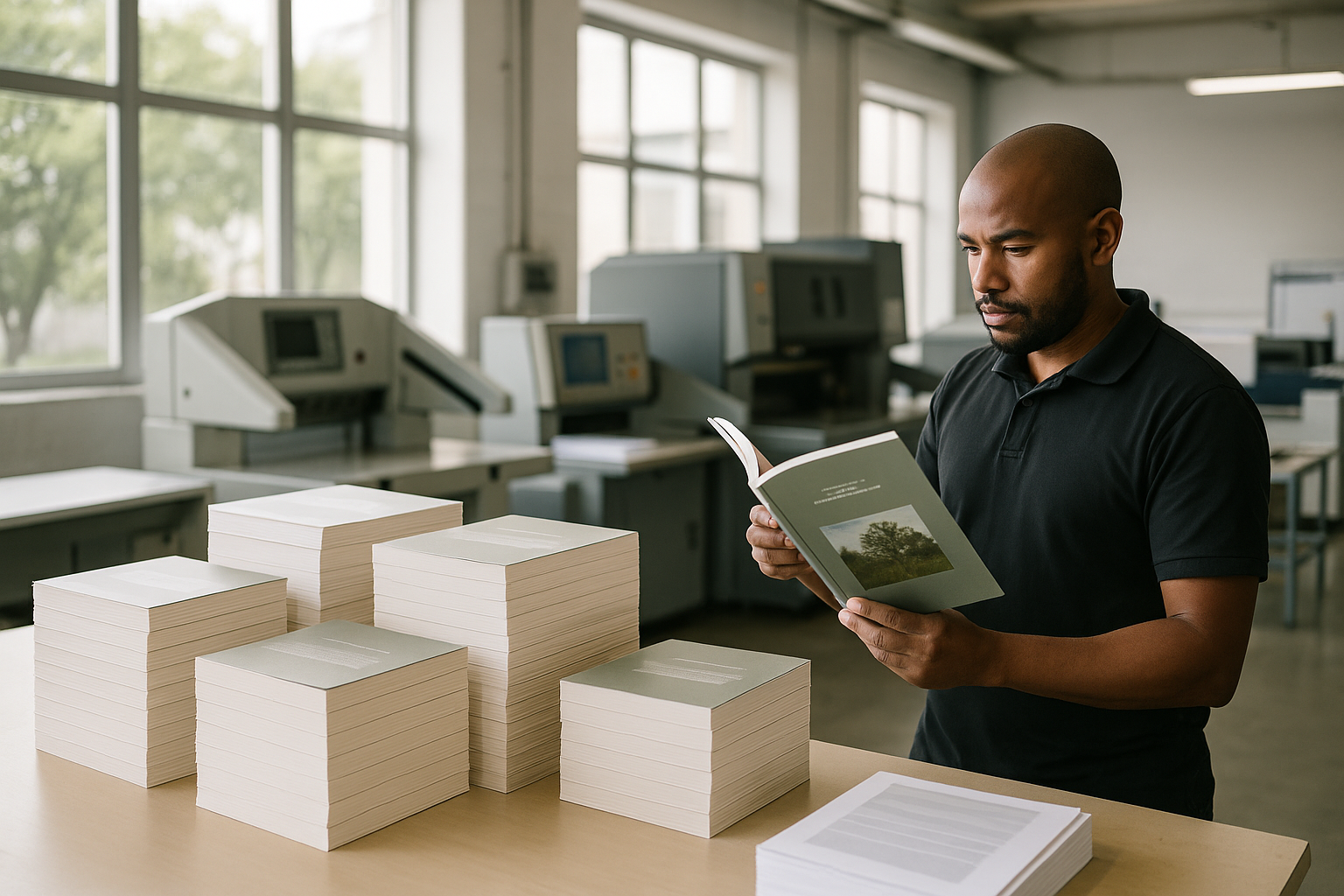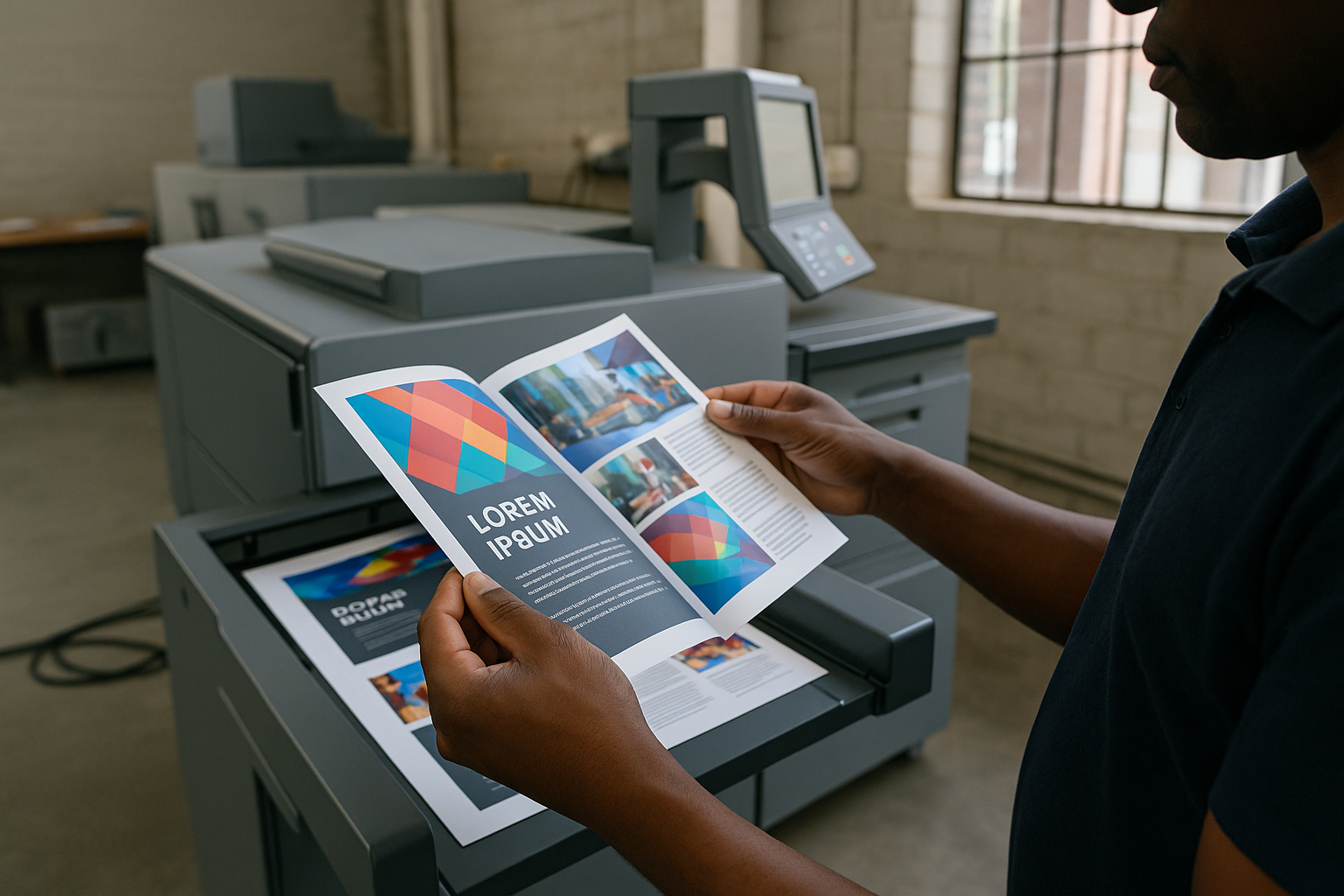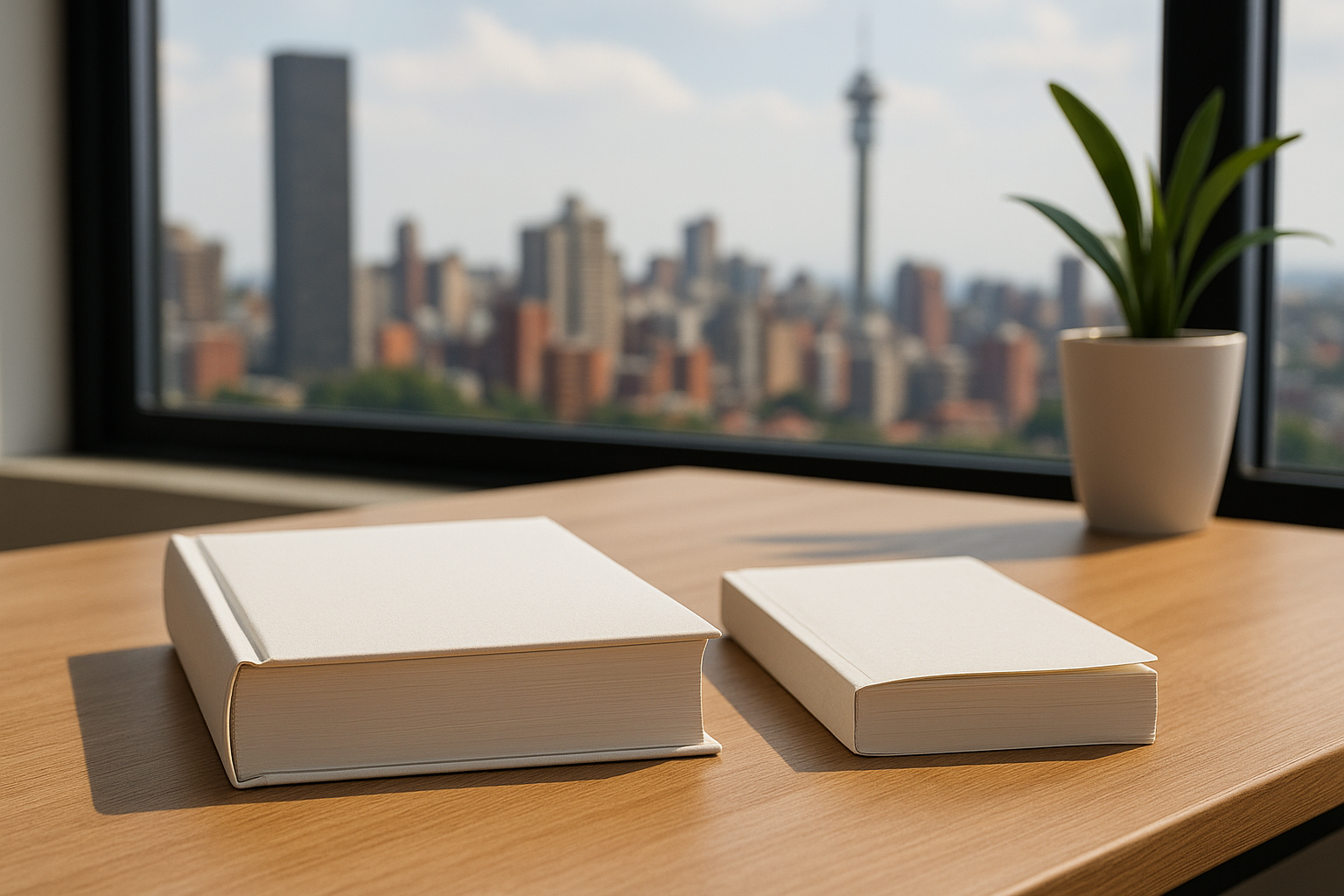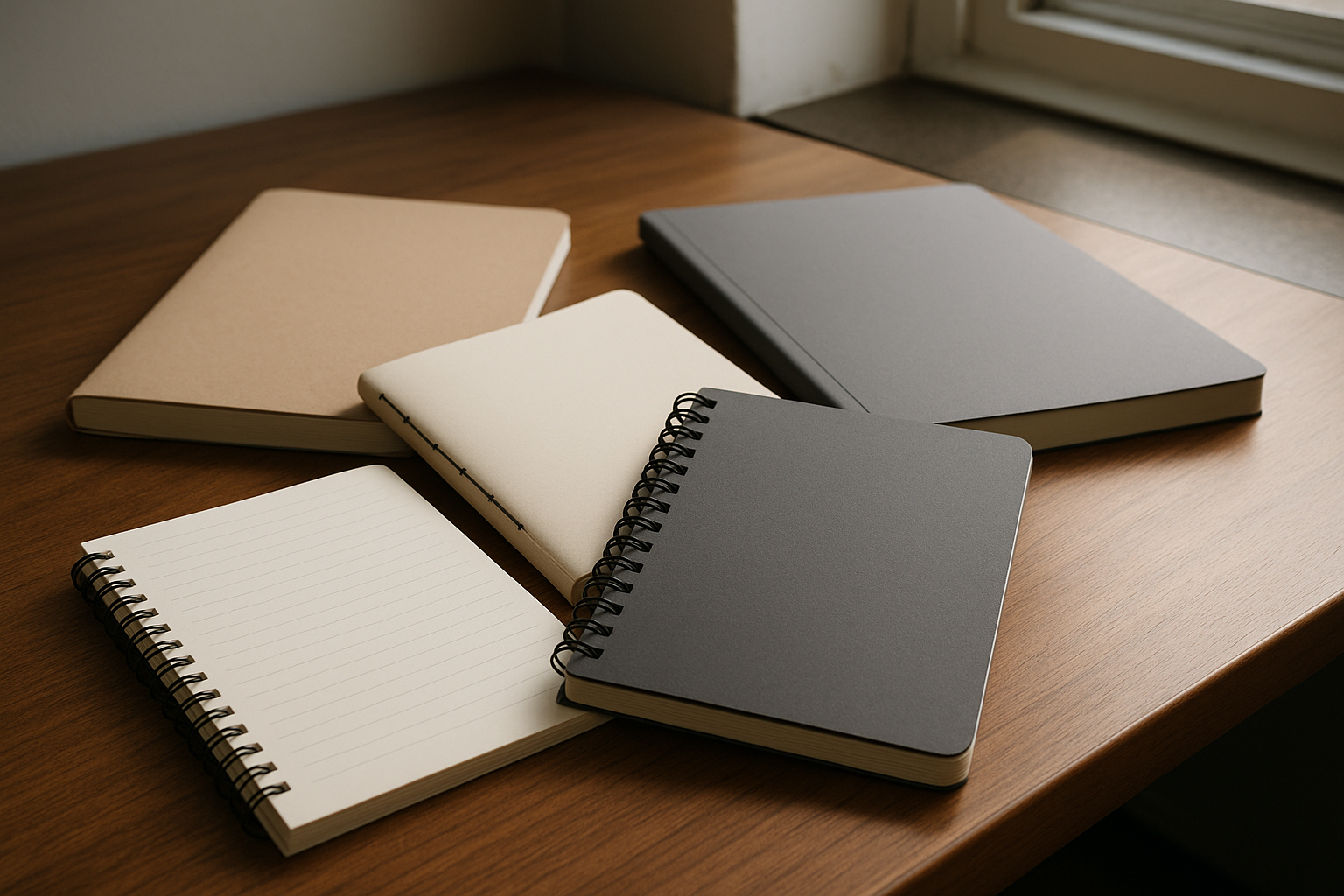Hardcover book printing is one of the most underrated branding and marketing tools for small businesses — it elevates perceived value, supports educational and event needs, and offers a durable, tactile experience that digital files can’t match.
What is hardcover book printing and why should a small business care?
Hardcover book printing refers to the production of books with rigid covers, strong spines, and professional binding—what many call hardcover books. For small businesses in South Africa and beyond, a hardcover book becomes a flagship piece: a company profile, catalogues, training manuals, or limited-edition promotional books that represent the brand in a tangible, premium way. Unlike short-lived printed materials, a professionally produced hardcover stays on desks and shelves, working as a silent salesperson.
Hardover book printing matters because it combines durability and prestige. It suits industries from commercial printing and packaging printing to educational printing and custom publishing. Use cases include school textbook printing and bulk educational printing for schools, conference yearbooks, and branded gift books for clients or donors.
How does hardcover book printing compare with paperback and digital formats?
When deciding between formats, businesses should weigh cost, longevity, and brand impact. Hardover book printing is typically more expensive per unit than paperback, but it delivers a higher perceived value. Digital formats are cheap to distribute, yet they lack the physical permanence and sensory appeal that drives memory and trust.
Below is a quick comparison table showing typical strengths and trade-offs:
Format |
Cost per Unit |
Perceived Value |
Best For |
Hardover |
Higher |
Very High |
Brand books, textbooks, catalogues, premium gifts |
Paperback |
Lower |
Medium |
Mass-market books, short-run promos |
Digital |
Lowest |
Low–Medium |
Mass distribution, cost-sensitive audiences |
Which printing methods and finishes are used in hardcover book printing?
Hardcover book printing blends litho and digital printing technologies with specialised finishing. For large runs, litho printing offers cost efficiencies and consistent colour, while digital printing supports short runs and print-on-demand flexibility. After printing, cover boards are wrapped and laminated, spines are reinforced, and finishes like foil stamping, embossing, spot UV, and custom endsheets are applied to enhance tactile appeal.
Printers serving South Africa’s commercial printing and educational printing sectors often combine these methods to deliver both school textbook printing and boutique custom publishing. If you need fast turnaround printing for term preparation or event promotion, many shops offer hybrid workflows that reduce lead times while keeping quality high.
How much does hardcover book printing cost and what affects pricing?
Costs vary widely based on size, page count, print run, paper stock, and finish. Key cost drivers include the type of board for the cover, the number of colours (CMYK vs. spot), whether foil or embossing is used, and whether the print is litho or digital. Bulk educational printing for schools often reduces per-unit cost dramatically through economies of scale, while short-run custom publishing or print-on-demand keeps inventory low but per-unit cost higher.
Typical pricing influences to consider:
- Run length — longer runs lower unit costs.
- Paper grade — coated vs. uncoated affects feel and price.
- Binding complexity — sewn signatures vs. perfect binding.
- Custom finishes — foil, emboss, and special varnishes increase costs but boost impact.
Where can South African organisations order hardcover book printing and get delivery across the country?
Many commercial printers in South Africa offer nationwide delivery, including services tailored to schools and educational publishers. Whether it’s bulk textbook orders ahead of a school term or branded catalogues for retail rollouts, look for providers with experience in school textbook printing, catalogue printing, and booklet printing. Local printers understand the logistics of distribution to remote regions and can help plan staggered deliveries aligned with term preparation schedules.
If you need examples of services that specialise in these solutions, see offerings for textbook printing, book printing, and catalogue printing as starting points for supplier selection.

How does hardcover book printing support educational printing and bulk textbook runs?
Hardover book printing is integral to school textbook printing because hardcover books withstand classroom use, multiple-year circulation, and the rigours of student handling. Bulk educational printing benefits from predictable schedules—schools order ahead of terms, and printers plan runs to optimise lead times. According to UNESCO, more than 2.2 million new titles are published worldwide each year, driving demand for reliable binding and durable formats like hardcover books.
Large-volume educational runs also allow printers to offer cost-effective solutions: volume discounts, inventory management, and tailored delivery schedules that match school calendars. Printers often provide curriculum compliance checks and numbering for multi-volume sets, which save administrative time for education departments and schools.
What role does hardcover book printing play in small business marketing and events?
Small businesses can use hardcover book printing as a high-impact marketing tool—company histories, thought-leadership books, product catalogues, and event programmes are all elevated when produced as hardcover editions. A hardcover catalogue or brochure signals permanence and investment in quality, making it an excellent choice for trade shows, investor gifts, and VIP client outreach.
For events and promotions, consider limited-edition runs or signed copies; the exclusivity of a hardcover book increases perceived value. If your business needs accompanying lighter collateral, see specialist services for brochure printing and booklet printing to create a complete suite of printed materials that reiterate brand messages across formats.
Can you get eco-friendly hardcover book printing options in South Africa?
Yes. Many South African printers now offer environmentally conscious choices: FSC-certified paper, eco inks, recycled boards for covers, and water-based coatings. Eco-friendly hardcover book printing reduces environmental impact without sacrificing quality. For organisations committed to sustainability, these options demonstrate leadership and align with corporate responsibility goals.
How long does hardcover book printing take—what are realistic lead times?
Turnaround depends on run size, finishing complexity, and production schedules. Simple short runs using digital processes can be delivered in as little as 5 –10 business days. Larger litho runs with special finishes like foil stamping or embossing typically require 5 to 12 working days. For school textbook printing and bulk educational printing, plan months ahead of term start dates to avoid rush fees and shipping delays.
Fast turnaround printing is possible when printers streamline prepress, approvals, and logistics. To reduce lead time, prepare print-ready files, approve proofs quickly, and discuss staged deliveries with your supplier to get partial shipments to priority locations first.
What quality checks and proofs should you expect with hardcover book printing?
Quality control is critical for hardcover book printing. A reputable printer will offer soft proofs and physical press proofs for colour-critical projects, especially for litho runs. Expect checks for colour accuracy, trim and bleed margins, spine width, and cover board adhesion. For school textbook printing and educational materials, pagination, indexing, and page order checks are essential.
Ask your printer about their preflight process and whether they provide signed-off digital proofs or a small print sample run before full production. These steps prevent costly reprints and ensure the final product meets brand standards.

How do I choose the right paper, binding, and finishes for my hardcover book project?
Choosing materials depends on purpose. For display-quality books and catalogues, heavier coated stock (128–170 gsm) for interior pages and a rigid board with a laminated wrap or cloth cover work best. For school textbooks, durability and readability are priorities—consider uncoated or matte finishes to reduce glare and sturdy sewn binding for long life.
Finishes like foil stamping, embossed logos, or debossing elevate perception but increase cost. Here’s a short checklist to guide decisions:
- Use heavier interior stock for image-rich catalogues.
- Choose sewn binding for textbooks; perfect binding may suffice for short-lived manuals.
- Select finishes that reinforce brand identity—matte for understated luxury, gloss for vibrant images.
What are common pitfalls with hardcover book printing and how can they be avoided?
Common issues include poor colour matching, incorrect spine calculations, inadequate proofing, and underestimating lead times. To avoid these pitfalls, provide clear specs, confirm trims and bleeds, request physical proofs for critical colour work, and coordinate delivery schedules with the printer early. According to industry research, attention to prepress and proofing reduces reprint rates substantially—so invest time in approvals.
Finally, partner with a printer experienced in both commercial printing and educational printing to benefit from best practices across project types. Their familiarity with school textbook printing, catalogue printing, and brochure printing services ensures smoother execution from quote to delivery.
How can I get started with a hardcover book printing project in South Africa?
Start by defining the purpose, run length, and budget. Gather content—text, images, and branding assets—and prepare a simple brief that includes page size, page count, colour requirements, and desired finishes. Reach out to printers with experience in custom publishing, print-on-demand, and bulk runs. Ask for sample packs and references, and request a quote that includes proofing, delivery across South Africa, and any import duties if components are sourced offshore.
One practical step is to compare options across providers: request quotes for litho and digital scenarios, ask about eco-friendly paper choices, and consider staged deliveries if you’re managing distribution to multiple schools or branches. According to market observations, print remains a trusted medium for conveying authority—Nielsen and industry analysts report that print formats continue to command a significant share of book sales, especially for hardcover editions, underscoring the enduring value of investing in hardcover book printing.
Where can I learn more about hardcover binding techniques?
If you want a deeper dive into technical binding methods, the Wikipedia page on hardcover books offers a concise overview of materials and processes: Hardcover book. For hands-on advice and supplier guidance in South Africa, consult printers who specialize in both bespoke hardcover projects and large-scale educational printing: see options for training manual printing, brochure printing, and booklet printing to round out your printed communications strategy.
Final checklist before you approve a hardcover book printing job
Before signing off, run through this essential checklist:
- Confirm page count and sequence.
- Approve trim and spine proof.
- Verify paper stock and board specifications.
- Sign off on finishes (foil/embossing, lamination).
- Confirm delivery timelines and logistics.
- Ensure you have a clear, all-inclusive quote that accounts for contingencies.
- For educational customers: verify curriculum codes and ISBN/ISSN requirements where applicable.
At Print It ZA, we make this process seamless. Our experts guide you through each approval step, ensuring no detail is overlooked and your hardcover project is delivered with unmatched quality. Remember: well-executed hardcover book printing isn’t just a cost—it’s an investment in brand equity. It strengthens marketing for small businesses, supports school term preparation, and presents your content in a premium format your audience will value and keep.








